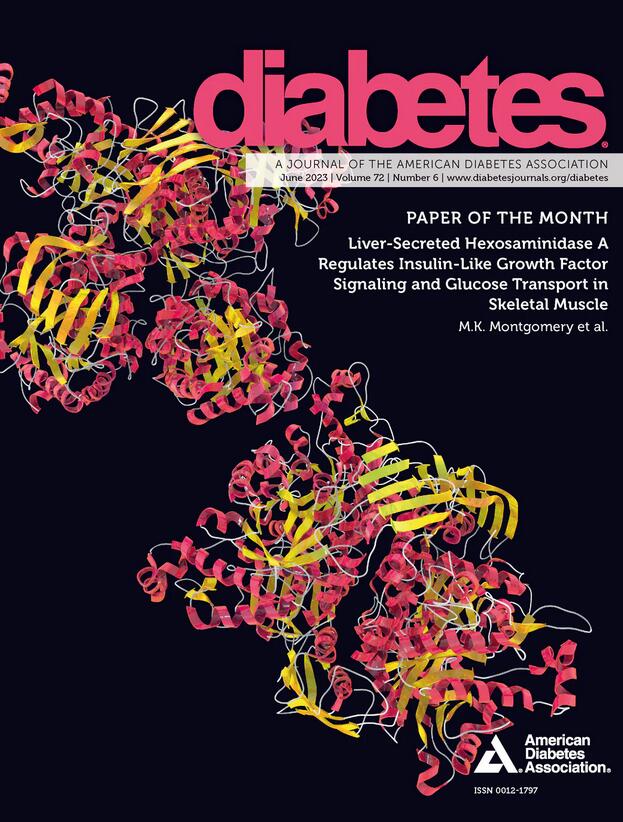749-P:综合分析支持培维肽治疗心血管安全和降低风险
IF 7.5
1区 医学
Q1 ENDOCRINOLOGY & METABOLISM
引用次数: 0
摘要
简介和目的:培维肽是一种GLP-1/胰高血糖素双受体激动剂,用于治疗肥胖和代谢功能障碍相关的脂肪性肝炎。培维肽降低心血管(CV)疾病的危险因素(过度肥胖、总胆固醇和低密度脂蛋白胆固醇、心脏炎性脂质、内脏脂肪组织、肝脏脂肪含量)。本研究评估了其对CV安全性参数的影响。方法:通过5项临床试验的综合分析,评估收缩压(SBP)和舒张压(DBP)、心率(HR)和心率压积(RPP)。在另一项独立的QT研究中,接受单次上升剂量(SAD)高达4.8 mg和多次上升剂量(MAD)高达3.0 mg,每周一次,持续12周的健康志愿者进行连续心电图记录,并通过线性时间匹配浓度- qtc分析评估friderica校正QT间期(QTcF)。结果:在综合分析中,分别观察到收缩压和舒张压降低13.0 mmHg和6.5 mmHg,对RPP或HR没有剂量相关或有临床意义的影响,也没有心脏不良事件失衡。在QTc分析中,在所有培维肽浓度下,经安慰剂校正后QTcF(∆∆QTcF)的平均(90% CI)预测变化为0.10 ms(图1)。结论:培维肽降低收缩压和舒张压,对QTc和HR无临床意义的影响,心脏不良事件无失衡。S. Tomah:雇员;Altimmune Inc .)股票/股东;Altimmune Inc .)J. James:顾问;Altimmune Inc .)布朗:雇员;Altimmune Inc .)B. Darpo:没有。罗伯茨:雇员;Altimmune Inc .)J.J. Suschak:雇员;Altimmune Inc .)何:没有。杨静:员工;Altimmune Inc .)哈里斯:雇员;Altimmune Inc .)本文章由计算机程序翻译,如有差异,请以英文原文为准。
749-P: Integrated Analysis Supports Cardiovascular Safety and Risk Reduction with Pemvidutide Treatment
Introduction and Objective: Pemvidutide is a GLP-1/glucagon dual receptor agonist in development for the treatment of obesity and metabolic dysfunction-associated steatohepatitis. Pemvidutide reduces cardiovascular (CV) disease risk factors (excess adiposity, total and LDL cholesterol, cardio-inflammatory lipids, visceral adipose tissue, liver fat content). In this study, its effects on parameters of CV safety were assessed. Methods: Systolic (SBP) and diastolic (DBP) blood pressure, heart rate (HR) and rate pressure product (RPP) were assessed in integrated analyses across 5 clinical trials. In a separate QT study, healthy volunteers receiving single ascending doses (SAD) up to 4.8 mg and multiple ascending doses (MAD) up to 3.0 mg once weekly for 12 weeks underwent continuous ECG recordings, and Friderica-corrected QT intervals (QTcF) were assessed by linear time-matched concentration-QTc analysis. Results: In integrated analyses, reductions in SBP and DBP up to 13.0 mmHg and 6.5 mmHg, respectively, were observed without dose-related or clinically meaningful effects on RPP or HR or imbalances in cardiac adverse events. In QTc analyses, mean (90% CI) predicted placebo-corrected change in QTcF (∆∆QTcF) was <10 ms at all pemvidutide concentrations (Figure 1). Conclusion: Pemvidutide reduces SBP and DBP without clinically meaningful effects on QTc or HR and no imbalances in cardiac adverse events. Disclosure S. Tomah: Employee; Altimmune Inc. Stock/Shareholder; Altimmune Inc. J. James: Consultant; Altimmune Inc. S.K. Browne: Employee; Altimmune Inc. B. Darpo: None. M.S. Roberts: Employee; Altimmune Inc. J.J. Suschak: Employee; Altimmune Inc. L. He: None. J. Yang: Employee; Altimmune Inc. M. Harris: Employee; Altimmune Inc.
求助全文
通过发布文献求助,成功后即可免费获取论文全文。
去求助
来源期刊

Diabetes
医学-内分泌学与代谢
CiteScore
12.50
自引率
2.60%
发文量
1968
审稿时长
1 months
期刊介绍:
Diabetes is a scientific journal that publishes original research exploring the physiological and pathophysiological aspects of diabetes mellitus. We encourage submissions of manuscripts pertaining to laboratory, animal, or human research, covering a wide range of topics. Our primary focus is on investigative reports investigating various aspects such as the development and progression of diabetes, along with its associated complications. We also welcome studies delving into normal and pathological pancreatic islet function and intermediary metabolism, as well as exploring the mechanisms of drug and hormone action from a pharmacological perspective. Additionally, we encourage submissions that delve into the biochemical and molecular aspects of both normal and abnormal biological processes.
However, it is important to note that we do not publish studies relating to diabetes education or the application of accepted therapeutic and diagnostic approaches to patients with diabetes mellitus. Our aim is to provide a platform for research that contributes to advancing our understanding of the underlying mechanisms and processes of diabetes.
 求助内容:
求助内容: 应助结果提醒方式:
应助结果提醒方式:


